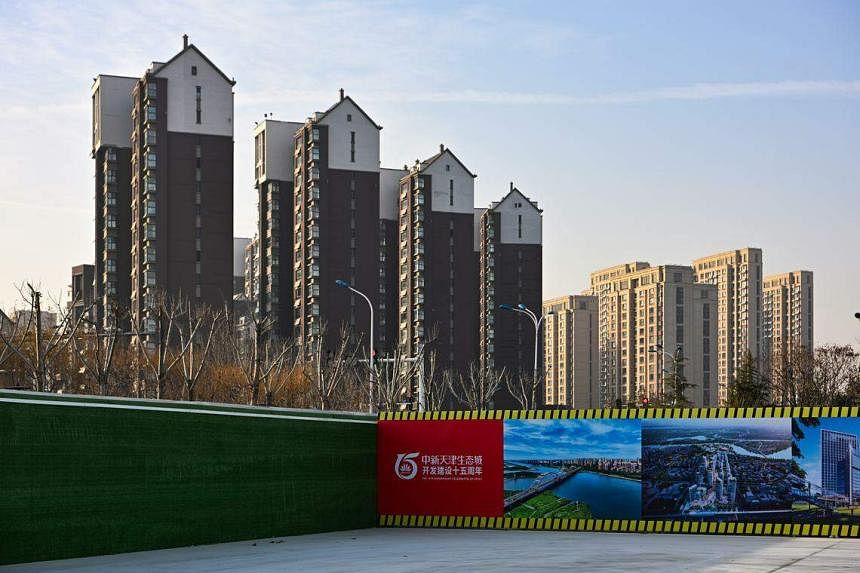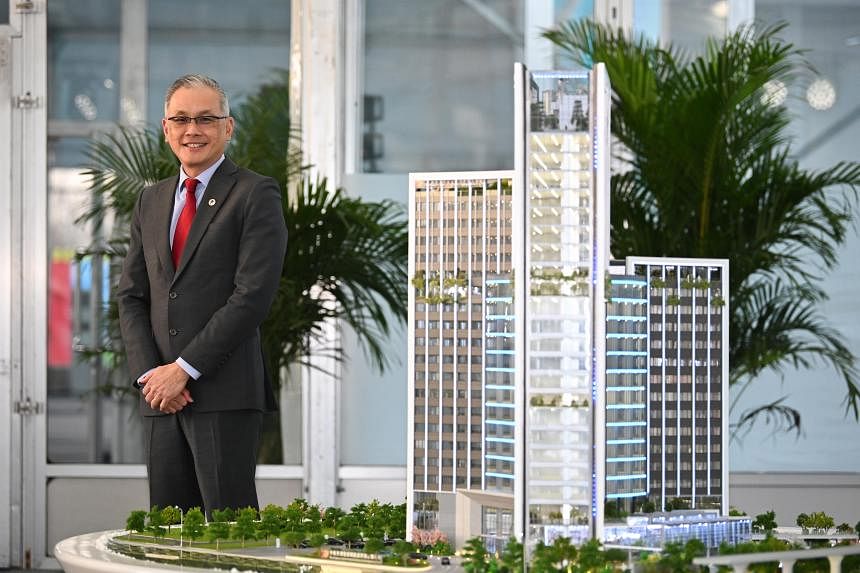SINGAPORE – Xinjiang native Chen Lei first moved to China’s northern port city of Tianjin for university more than 10 years ago.
She bought a home in Tianjin Eco-City (TEC) in 2012, drawn by its low housing prices, even though the place lacked amenities and public transport back then.
Now 33 years old and an insurance firm business manager, Ms Chen, who is married and plans to start a family soon, has since bought a second property in the Eco-City for her parents, who moved there from the western region of Xinjiang this year (2023).
“My bigger consideration was to find a place where I can bring my parents over to live after their retirement,” she said, adding that the city’s attractiveness had gone up during the Covid-19 pandemic, when travel was prohibited, given its easy access to nature.
Ms Chen now counts the Sino-Singapore Friendship Garden, which overlooks a meandering river that was formerly a wastewater pond, among her favourite haunts – one that she would often take visiting friends to.
Tianjin Eco-City, a Singapore-China inter-government project, has grown considerably since ground was first broken on the project in September 2008.
The 30 sq km city, about thrice the size of Sengkang, is home today to more than 150,000 residents and 30,000 registered companies – many of which are drawn to its reputation for sustainable urban development. In 2012, there were some 10,000 residents and around 600 companies.
The project has largely met its initial goal of building a sustainable and liveable city. Among the key performance indicators that the city has met by the end of 2022: All its wetlands are protected; all its buildings conserve water and energy; and all its residential areas are within a five-minute walk to a park or green space.
Fresh on the momentum of an upgrade in bilateral ties earlier in 2023, Singapore and China are now eyeing business and innovation in the low-carbon industry for TEC’s next stage of growth.
The eco-city has set its sights on tackling climate change, attracting a new wave of companies and researchers working on low-carbon products and technologies. This builds on the city’s existing businesses, from tech and e-commerce firms such as Tencent and JD, to financial services, education and tourism.
“Pivot may not be the best word – it’s an expansion of our mandate, if you like,” said Mr Teo Eng Cheong of the city’s shift in vision. He is chief executive of the Sino-Singapore Tianjin Eco-City Investment and Development (SSTEC), the city’s master developer.
“And that is very consistent with our thinking on government-to-government cooperation,” he said, adding that Singapore-China relations have always been forward-looking and comprehensive.
The TEC project was mooted by then Singapore Senior Minister Goh Chok Tong and then Chinese Premier Wen Jiabao in 2007, against the backdrop of rapid urbanisation in China, as well as global attention on sustainable development.
In the earlier years, concern over pollution led the impetus to build a green and sustainable city, said Mr Teo, adding that China had done a lot in this area. “We can shift to (addressing) the more urgent and perhaps broader issue of carbon neutrality, which is bigger than just building a green and sustainable city.”
Elaborating on the low-carbon industry which the eco-city hopes to cultivate, Mr Teo told The Straits Times that these include firms making products that will help generate renewable energy more efficiently.
Or they could be firms creating new building materials with lower carbon emissions, or working on carbon capture technologies, which store emissions rather than release them into the atmosphere.

Tianjin Eco-City was named in 2013 as China’s first “national green development demonstration zone”, which provides tax incentives to environmentally friendly firms and encourages them to overcome regulatory hurdles. Now it has been designated as an upgraded zone, exemplifying high-quality, low-carbon economic growth and serving as a model for other cities in China and elsewhere.
This was announced on Dec 7 after a top-level Joint Council for Bilateral Cooperation meeting between Singapore and China, co-hosted by Deputy Prime Minister Lawrence Wong and Chinese Vice-Premier Ding Xuexiang.
Mr Wang Rui, vice-chairman of the China-Singapore Tianjin Eco-City Administrative Committee, told reporters in September 2023 that support for high-quality development of green and low-carbon industries would include tax and talent attraction policies.
Already, firms are tapping the eco-city to test their products.
In August 2023, Singapore autonomous vehicle company MooVita set up its China headquarters in the city, with plans to bring in a research and development team to test and deliver products such as electric buses.
MooVita was spun off from the Agency for Science, Technology and Research in 2016 and provides autonomous driving technology that can be used on different types of vehicles.
Another firm that is testing its solutions is RenewMaterial, a Singapore green technology company that makes furniture, flooring and decorative panels from agricultural waste such as rice and wheat stalks.
The Singapore University of Technology and Design is setting up a research and innovation centre in the city to support joint projects, enterprise development, education and training, as well as talent exchanges in the low-carbon field.
In Keppel chief executive Loh Chin Hua’s view, the eco-city’s focus on sustainability has not come at the expense of commercial objectives. Keppel leads the Singapore consortium of TEC, and works with its Chinese counterpart to guide the 50-50 joint venture.
Mr Loh described the eco-city as an idea ahead of its time. “It has helped to demonstrate that sustainable cities can be commercially attractive propositions.”
He said that over the years, even as land and home prices in the eco-city rose as the project matured, they remain affordable for the Tianjin market.
Since the start of the project, Keppel has sold more than 6,700 homes in the city. Keppel also provides infrastructure such as water treatment and renewable energy, as well as a carbon-neutral retail mall.
“SSTEC has been a regular contributor to Keppel’s earnings,” he said. “Even amid the current challenges in China’s property sector, there continues to be demand from developers for land in the eco-city, with SSTEC successfully selling two residential land plots in 2023.”
One of them is a 6.26ha plot in the central district, within walking distance of the Sino-Singapore Friendship Garden, sold in April 2023 for 554.9 million yuan (S$105 million).
In 2021, the SSTEC contributed a profit of $14 million, mainly from the sale of a commercial and residential plot. In 2020, another two residential land plots were sold and completed homes handed over, contributing $67 million in profit.
Mr Shang You, chief executive of Chinese animation studio Nice Boat Animation, is betting his company’s future on the eco-city, citing the physical changes he has witnessed since being based there in 2012.
“Our long-term future in the eco-city is certain because we have witnessed more than 10 years of its development... We’ve seen how they were completed step by step, from buildings to communities, businesses and schools.”
The firm is housed in the city’s National Animation Industrial Park, set up in 2011 to provide funding, technology, marketing and other services to the animation industry. These incentives have drawn more than 7,000 enterprises so far to the park.
About two-thirds of Mr Shang’s 300 or so employees live in TEC, himself included. Nobody from his company lived there when the firm first started, he noted, as the city was built from scratch on barren land.
He said: “If a city’s development is slow, or if there are issues with its direction, then its population will not keep growing. The growth itself is testament to the city’s vibrance and development.”


